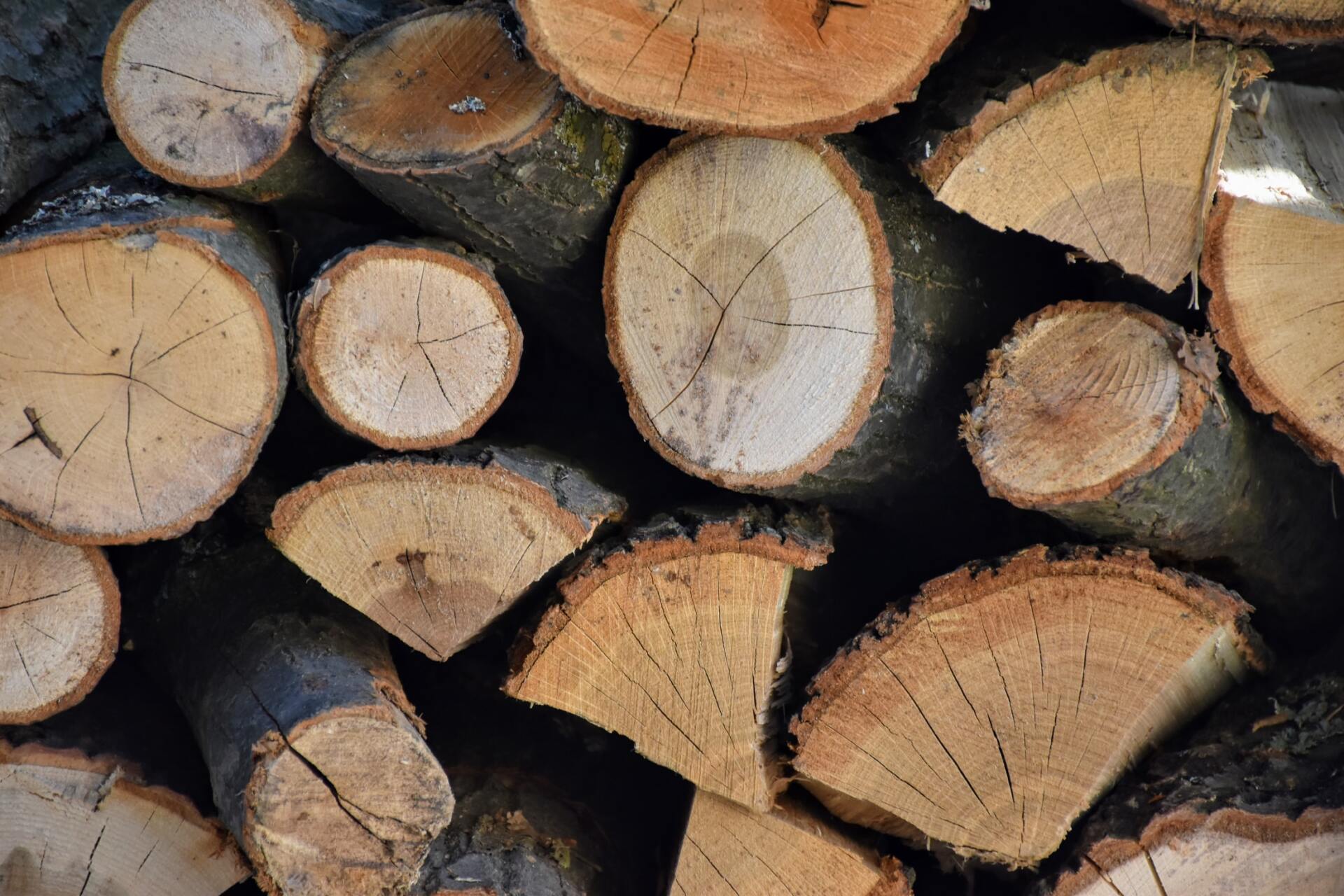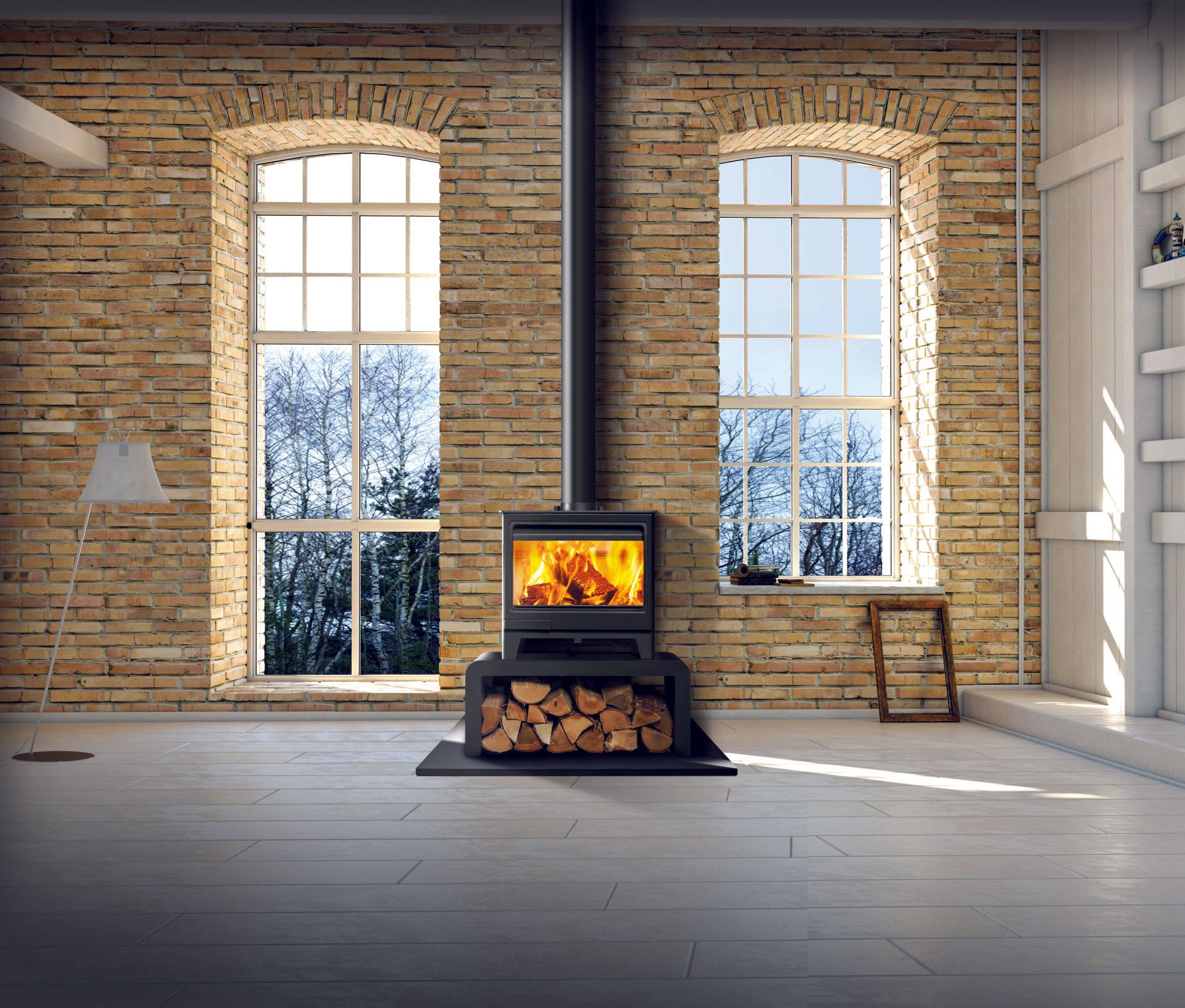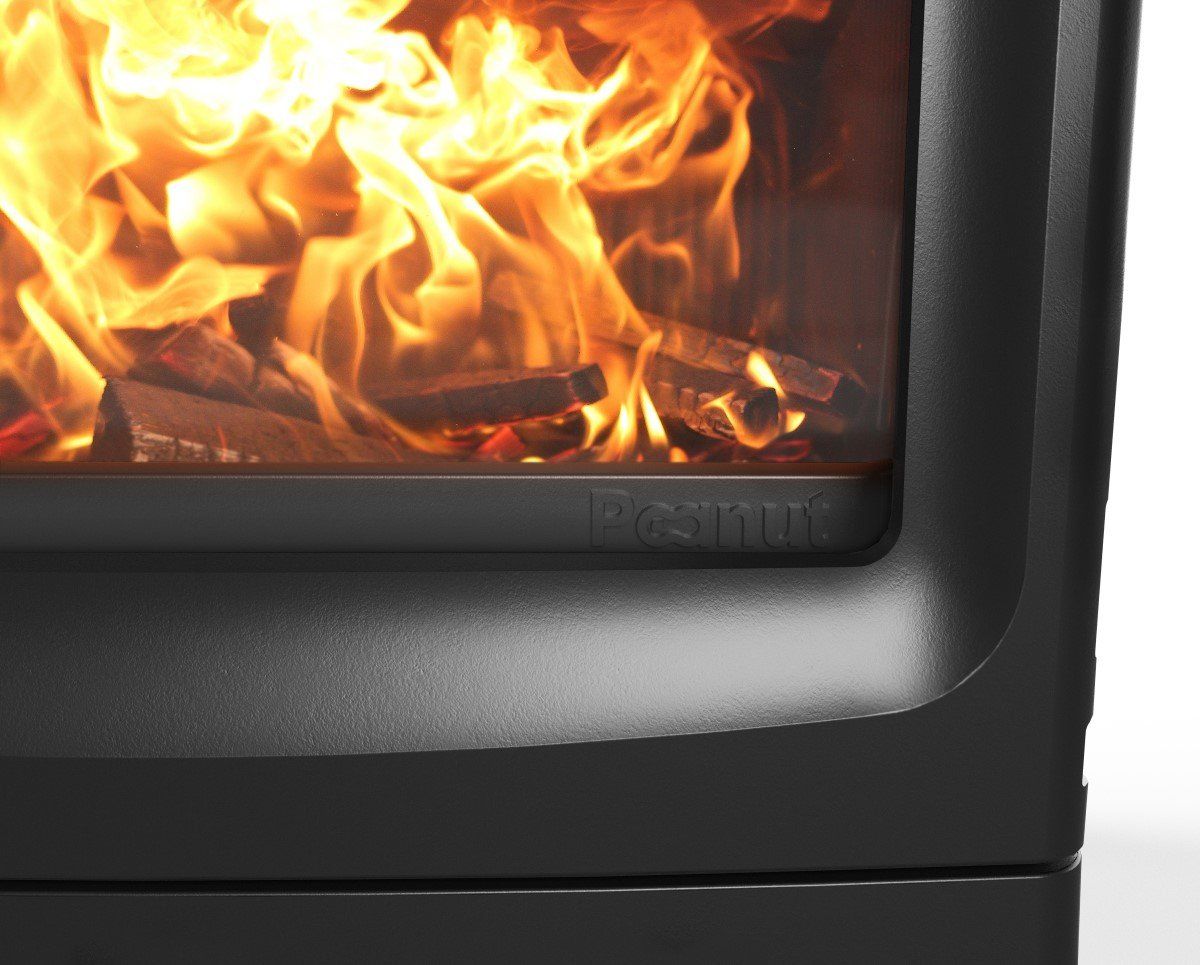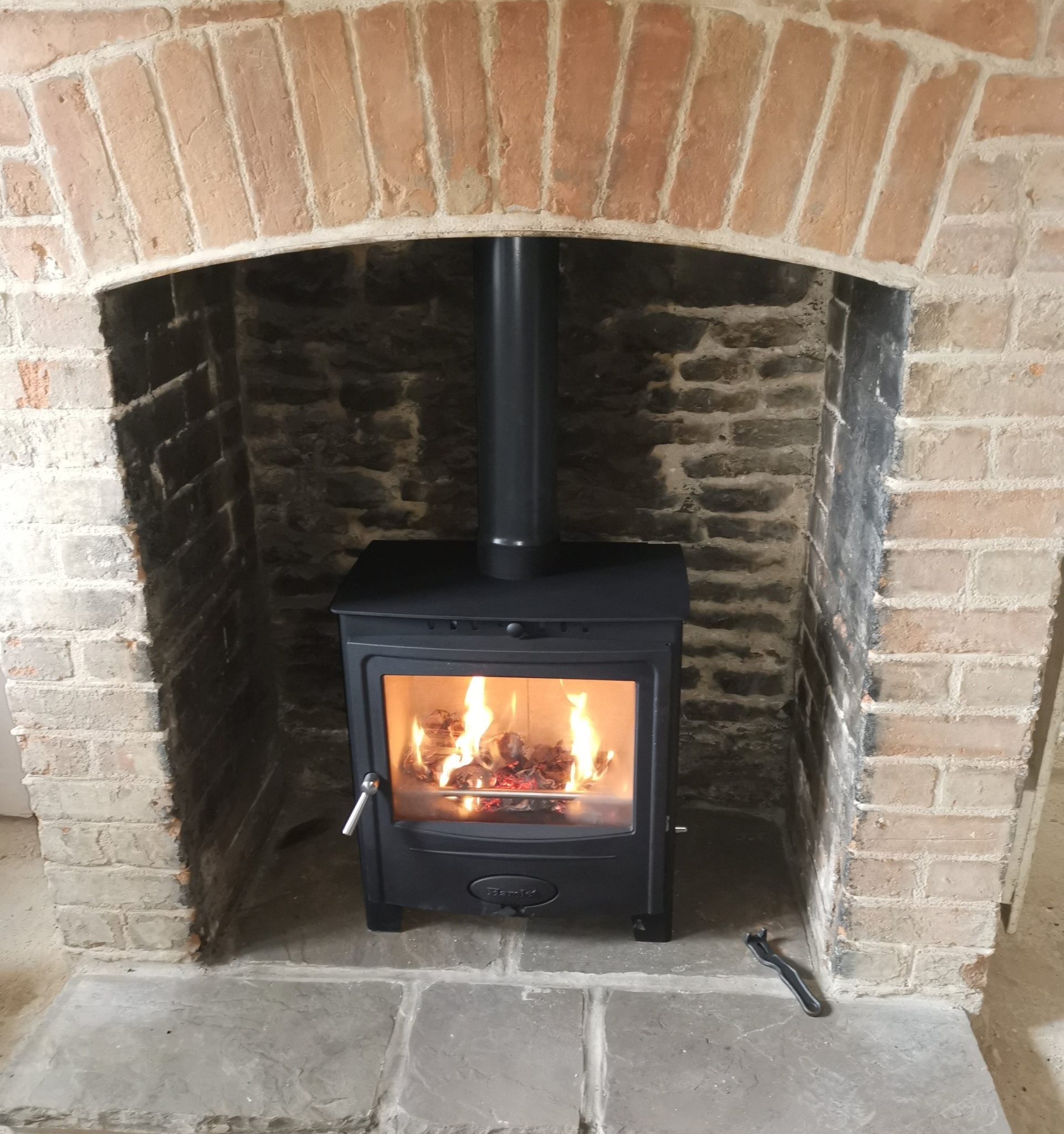So, you want to buy a Wood Burner or Multi Fuel stove…
Great! Here is what you should consider before you buy.
Choosing your wood burner or multi fuel stove is a personal choice consisting of many factors such as design, needs, and usage. We have put together a list of the key things to consider when choosing your new wood burner or multi fuel stove.
Wood Burner Or Multi Fuel Stove?
This is a personal choice, based on how you expect to use your stove. We have listed the key differences between the two:
Wood Burners:
- Can only burn wood with a moisture content below 20%.
- Flat bottomed, this means you will not have a grate.
- No ash pan, most manufacturers will supply a tool/scoop to empty ash from the bottom of a wood burner.
Multi Fuel Stoves:
- Can burn wood with a moisture content below 20% and smokeless fuels (like smokeless coal).
- Has a grate system. (Either a shaker/riddling grate or a static grate).
- Has an ash pan.
As mentioned above, this is a personal choice. If you only want to burn wood then a wood burner would be the best option. If you would like to burn smokeless fuels or the have the option to, then its best to choose a multi fuel stove.
Cast Iron Or Steel?
Wood burners and multi fuel stoves are usually made of cast iron, steel or a mix of the two. For example, some stoves have a twin skin body, one being cast iron and one being steel. Some stoves are steel bodied with cast iron components. For some stoves the body and components are either steel or cast iron.
Cast iron and steel both have pros and cons. The key difference is:
- Steel heats up faster but doesn’t retain heat as long.
- Cast Iron takes longer to heat up but retains heat longer.
Like when choosing between a wood burner or multi fuel stove, choosing between cast iron and steel is a personal choice based on how you intend to use the stove.
Are you in a Smoke Controlled Area?
If you are in a Smoke Controlled Area you will only be able to have DEFRA Approved/DEFRA exempt wood burners or multi fuel stoves installed.
Style
Style is a very personal thing, and everyone has different tastes.
We tend to divide our stoves into two style categories: Traditional & Contemporary. This is to make it easier for our customers to search through our stoves and for us to direct customers towards stoves that will best suit their tastes. However, many of our stoves are versatile and can suit both traditional and contemporary settings.
Size
Style is a very personal thing, and everyone has different tastes.
We tend to divide our stoves into two style categories: Traditional & Contemporary. This is to make it easier for our customers to search through our stoves and for us to direct customers towards stoves that will best suit their tastes. However, many of our stoves are versatile and can suit both traditional and contemporary settings.
Usability
When choosing a wood burner or multi fuel stove there are some key usability questions we suggest customers consider:
- How easy is the stove to use?
- How easy is the stove to clean out?
- How often will the stove need cleaning out?
- How quickly will it heat up?
- How often will I have to clean the glass?
Please be aware that the answers for these questions aren’t always straight forward, as it will depend on types of fuel, fuel load and how often the stove is in use.
Should I buy an EcoDesign 2022 Ready stove?
Short answer, yes.
Why? They are future proofed.
EcoDesign 2022 Ready stoves meet the new regulations that are due to come into force on 1st January 2022. They are more environmentally friendly and more efficient than non EcoDesign Ready stoves.
We also recommend buying EcoDesign Ready stoves now because if you sell your house after 2022 the stove you have installed will meet the new regulations.
Any stove manufactured before the 1st January 2022 is exempt from these regulations, therefore if you already have a stove or are choosing a non EcoDesign Ready stove then you WON’T have to change it when the new regulations come in. However, due to EcoDesign Ready stoves being better and cleaner than non EcoDesign Ready stoves we will always advise to choose an EcoDesign Ready stove when possible.
Manufacturer Warranties
The length of time of the warranty is what most customers consider. However, every manufacturer has different terms and conditions and it is important to consider these when choosing your wood burner or multi fuel stove.
Check what is covered by the warranty. Most stove manufacturers don’t provide a warranty on consumable parts such as the fire bricks and glass. If unsure ask what is covered under the warranty and what isn’t. In fact many stove manufacturers list their warranty terms on their company websites.
Check what is required to keep the warranty valid.
This is a big one to consider as most manufacturers will have specific terms. The most common term is the number of chimney sweeps required a year to keep the warranty valid and this varies between manufacturers.
For example:
(Please note this example is purely for illustrative purposes and does not
reflect any specific company or pricing. This example should not be used as an
actual estimate of cost.)
Stove Manufacturer A (SMA) - Offers a 10 year warranty and the stove is
£1000.
Stove Manufacturer B (SMB) - Offers a 10 year warranty and the stove is £750.
In SMA's warranty terms and conditions you need to have your chimney swept
professionally once a year
for the warranty to stay valid.
In SMB's warranty terms and conditions you need to have your chimney
swept professionally twice a year
for the warranty to stay
valid.
An average professional chimney sweep is £50 a time.
For SMA the total cost of chimney sweeping over the 10 year warranty period
is £500.
For SMB the total cost of chimney sweeping over the 10 year warranty period
is £1000.
SMA may be more expensive to purchase but is cheaper in yearly chimney
sweeping. Over 10 years including the purchase of the stove and annual chimney
sweeping, it will cost you £1500.
SMB may be cheaper to purchase but will cost more that SMA in yearly chimney
sweeping to keep the warranty valid. Over 10 years including the purchase
of the stove, and annual chimney sweeping, it will cost you £1750.
As illustrated above some manufacturers require more upkeep than others to keep a warranty valid, and therefore can end up costing you more in the long term. When choosing your stove consider your needs and factor in long term costs.
Spares
We often compare the ownership of a stove to that of a car. Every now and then you will need to replace something to keep it running safely. Find out which are the most common parts that need replacing and compare how easy it is to get replacement parts and the cost.
We tend to advise customers consider and compare the prices of replacement bricks and glass when making this decision. Some replacement parts are more expensive than others and prices can vary between manufacturers.
We also advise customers find out how long it will take to receive replacement parts. This can vary between manufacturers, and during the warranty period you will be required to only use spare parts directly from the manufacturer.











